UPDATED MARCH 20: Rail Group Staff Report: Global railway industry response to the COVID-19 pandemic
Written by RT&S Staff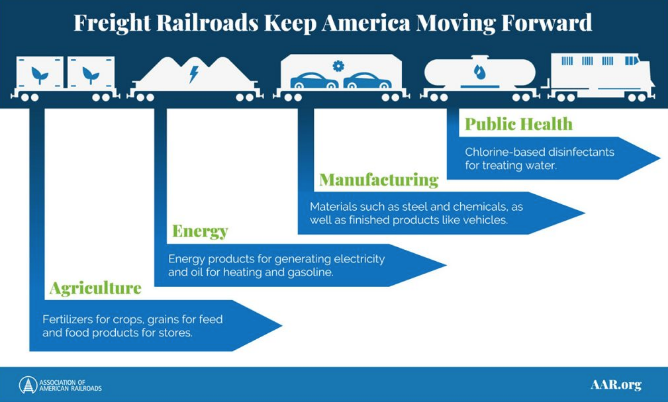
The World Health Organization has declared COVID-19, otherwise known as the coronavirus, a pandemic, and the U.S. has declared a National Emergency. The global railway industry has been responding. Following is a staff report from the editors at Railway Age, Railway Track & Structures and International Railway Journal that will be continuously updated with the latest developments, the most significant posted up top.
U.S. and CANADIAN DEVELOPMENTS
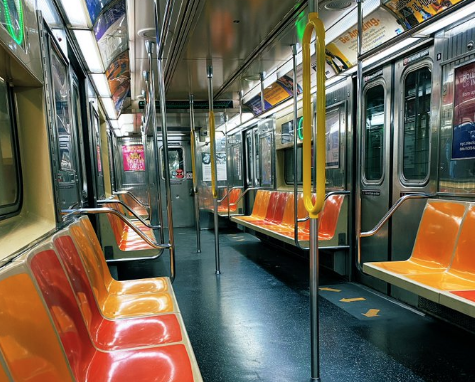
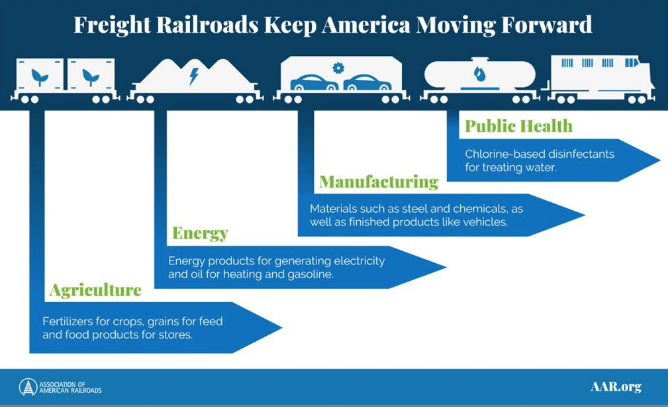
“Recognizing the industry’s responsibility to both the nation and their [employees], railroads maintain and routinely review their pandemic response plans that have addressed other events, including the [2009] H1N1 outbreak,” AAR said. “Since news of COVID-19’s spread in early January 2020, railroads and their Chief Medical Officers have been working together to update and adapt their plans to specifically address the need to contain, mitigate and respond to the coronavirus outbreak in line with most recent recommendations coming out of the Centers for Disease Control (CDC).
“The industry holds daily calls among cross-functional teams to share information and best practices to keep their railroad employees and their families — as well as the larger community — safe. Railroads are also in constant communication with the federal partners at the U.S. Department of Transportation, the Department of Homeland Security and the White House as well as state and local officials on evolving public health developments and efforts to contain the spread of the virus.
“Freight railroads are taking significant precautions to protect the health and well-being of their employees. These efforts include providing employees with timely and accurate information on protecting themselves and their families through effective hygiene practices; directing employees to stay home if they are sick; communicating with employees and facility partners about workplace spatial distancing and mitigation strategies recommended by the CDC; expanding the frequency of cleaning and sanitation in railroad headquarters, maintenance facilities, dispatch and operations centers as well as on locomotives and rail equipment; and restricting domestic and international employee air travel.
“To increase [social] distance between employees, railroads are doing the following to limit potential exposure to the virus: Transitioning employees not directly involved in train operations to telework arrangements in order to reduce density at work locations, especially at highly populated headquarters; restricting access to mission-critical locations such as operations and dispatching centers to only essential staff who must be present to perform their duties; and activating secondary dispatch and operation locations to expand social distancing efforts and maintain vital functions.”
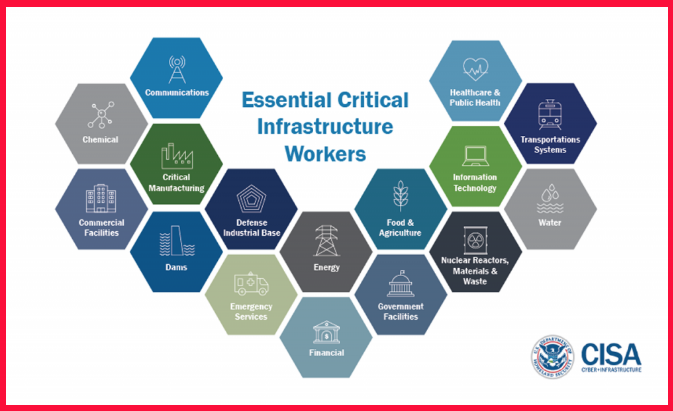
NRC (National Railroad Construction and Maintenance Association): On March 19, the Department of Homeland Security CISA (Cybersecurity and Infrastructure Security Agency) issued a memorandum, “Guidance on the Essential Critical Infrastructure Workforce,” on the identification of such workers during COVID-19 response. “The list in this link identifies workers who conduct a range of operations and services that are essential to continued critical infrastructure viability, including staffing operations centers, maintaining and repairing critical infrastructure, operating call centers, working construction, and performing management functions, among others,” noted NRC President Ashley Wieland. “As it pertains to NRC members, the list includes workers responsible for operating dispatching passenger, commuter and freight trains and maintaining rail infrastructure and equipment; and employees who repair and maintain vehicles, aircraft, rail equipment, marine vessels, and the equipment and infrastructure that enables operations that encompass movement of cargo and passengers.”
NEW JERSEY TRANSIT: At the agency’s most recent board meeting, it was reported that ridership had declined by 20%. Railway Age Contributing Editor David Peter Alan, a daily user of NJT services, reports: “Observations over the past week showed historically light ridership on NJT trains, and unofficial reports said that counts on some trains are 80% below normal.” With system-wide revenue down 88% since March 9, NJT is seeking $1.25 billion in emergency federal funding.
Beginning March 20, NJT commuter rail lines, with the exception of the Atlantic City Rail Line (ACRL), will operate on a weekend schedule with slight modifications. Bus, Hudson-Bergen Light Rail, Newark Light Rail, RiverLINE and Access Link will all remain at full weekday schedules.
NJT has formed a task force that will meet regularly and share the latest information from state and federal health officials. The task force consists of representatives from medical, emergency management, environmental, safety and communications departments. Like virtually all transit agencies, NJT is disinfecting its stations and railcars. “NJ Transit Rail, Bus, Light Rail and Access Link will enhance current cleaning procedures to augment our daily current practices and additional disinfection regimens,” the agency said in a statement.
NEW YORK METROPOLITAN TRANSPORTATION AUTHORITY: As of March 19, New York City Transit, Long Island Rail Road and Metro-North were operating regular schedules, despite drastic ridership declines (see below).
“The MTA is drawing down $1 billion on its existing line of credit as the authority continues its essential role responding to the COVID-19 pandemic, which crucially involves moving the medical professionals, first-responders, transportation workers, child care workers and essential personnel on the front lines protecting New York,” MTA Chairman and CEO Chairman Patrick J. Foye said on March 18. “These emergency funds, which will be drawn down on March 20, are critical as the agency encounters a fiscal cliff due to significant, sustained revenue losses and increased expenses resulting from the coronavirus pandemic. Let’s be clear: These funds, while important in providing liquidity, are not a comprehensive or permanent solution. This a national disaster that requires a national response and we are urgently requesting the federal government provide more than $4 billion in federal funding to ensure the financial health of the MTA. We cannot afford to wait.”
Foye on March 17 sent a letter to the New York Congressional Delegation requesting more than $4 billion in federal aid. “The MTA is now facing financial calamity,” Foye said. “Ridership has fallen approximately 60% on the subways, 90% on Metro-North, 67% on Long Island Rail Road and 49% on buses. As a result, MTA revenue has plummeted as we provide these essential services. We project the full impact will be more than $4 billion by the end of 2020—even without accounting for the expected collapse of the more-than $6 billion in state and local taxes dedicated to the MTA.
“For these reasons, I am urgently requesting substantial federal aid at the level of MTA revenue losses ($3.7 billion assuming ridership trends … continue for six months) and COVID-19 expenses (approximately $300 million annualized) as we continue to respond to the coronavirus pandemic.
“In the midst of this crisis, the MTA … is continuing to serve the public. We continue to operate our subways, railroads, buses, and Access-A-Ride services around the clock, helping to get essential employees—medical professionals, childcare workers, first responders, public utility employees, our transportation workers—where they need to be … But the stark reality is that … more people [are staying] home following the advice of medical experts.
“The MTA has already committed to finding $2.8 billion in savings over the next several years. No agency of our size can find additional billions in savings equivalent to the damages we have and will sustain as a result of this pandemic. This is a national disaster that requires a national response … It’s also a matter of fairness. As you know, New York [State] is one of the top donor states, sending Washington $35 billion more every year than it receives in federal assistance. Now that it’s desperately needed, we’re asking for the federal government to redirect some of this money back to New York.
“A supplemental formula increase to existing funding sources does not go far enough. And flexing federal funds currently allocated for capital projects cannot be the solution. Not only does this approach unnecessarily pit our operating costs against needed State of Good Repair investments to maintain our system, it has the potential to slow the critical growth of the MTA … New York produces nearly 10% of the entire U.S. GDP, and the nation will need a strong New York to fully rebound from the current crisis. The mass transit system operated by the MTA is essential to that objective, and restoring it is a matter of national interest.”
“There are other financial solutions for the MTA,” notes Larry Penner, a transportation historian, writer and advocate who previously worked 31 years at the Federal Transit Administration Region 2 New York Office. “The MTA’s request for $4 billion in additional aid from Washington is on top of the annual $1.4 billion in assistance provided by the FTA. The MTA has budgeted $4 billion of local funding within its $51 billion 2020-2024 Five Year Capital Plan to be used toward paying for the $6.9 billion Second Avenue Subway Phase Two. This project will benefit only some of its five million daily subway riders. Why doesn’t the MTA make the difficult financial decisions everyone else does? Given the current financial crises faced by all levels of government, the MTA should postpone funding this project until the next 2025-2029 Five Year Capital Plan. Use the funds currently available under the 2020-2024 plan toward dealing with additional costs incurred by the coronavirus.”
PATH (Port Authority Trans-Hudson): Service continues to operate on a regular schedule.
SEPTA (Southeastern Pennsylvania Transportation Authority): Ridership has declined approximately 60% on Transit modes and 80% on Regional Rail due to the closures of offices and businesses. Regional Rail lines are now operating on Severe Weather schedules—weekend schedules, with two or three trains augmenting hourly service to create a “mini-peak” when most commuters ride. Trains are only running every two hours to Wilmington, Del., outside peak commuting hours, while Newark, Del., and Cynwyd have only limited peak-hour service. SEPTA will reduce levels for all Transit service, including buses, the Market-Frankford Line, Broad Street Line, Trolleys and Norristown High Speed Line, starting Sunday, March 22. “Transit schedules will be similar to what SEPTA runs on a typical Saturday, and also consistent with changes that were put into place earlier this week on Regional Rail,” the agency said on March 19. “With these adjustments, SEPTA will run all services on Saturday schedules, seven days a week, until further notice. This will include 24-hour train operations on the Market-Frankford and Broad Street Lines, which provide critical services for essential workers and those who need to access medical care.”
In addition to the schedule changes, starting on Friday, March 20, SEPTA will temporarily close outlying Regional Rail station ticket windows and waiting rooms. “As with the service changes, this is being done in accordance with the health recommendations for social distancing,” the agency said. ”SEPTA has added extra cleaning and disinfecting at stations and on vehicles in recent weeks. In addition, some employees who would normally operate buses and trains will now be repositioned at transportation centers and transit loops to further enhance these cleaning efforts.”
PATCO: The Speedline between Philadelphia and South Jersey is running every 15 minutes throughout the day, Monday through Saturday, every 20 minutes on Sundays, and every 30 minutes overnight.
MARC: Trains are operating on “R” schedules, designed for severe weather, with a few trains added. About half of the normal weekday trains on the Penn Line (along Amtrak’s NEC) are operating, with service through the day. The peak-hour-only lines are not faring as well. On the Camden Line, there are only three trains for commuting into Washington, D.C. (there are normally six) and one train for commuting into Baltimore (there were previously four). The “R” schedule calls for only one round trip to Frederick and Martinsburg, W.Va., with a second to Brunswick. There is currently one additional Martinsburg train being operated.
VIRGINIA RAILWAY EXPRESS (VRE) is operating an “S” schedule, with service on the Fredericksburg and Manassas Lines reduced by 50%. The normal schedule calls for eight trains during the peak commuting period; the current operation calls for only four.
MIDWEST: Transit in Minneapolis and St. Paul, including light rail, is no longer running from 11:00 p.m. until 4:30 a.m., the only announced service reduction. The Chicago Transit Authority (CTA) has stressed efforts to keep its system clean, but there were no announcements that service has been reduced. Service has now been reduced on the NICTD South Shore Line between Chicago and northwestern Indiana. It is similar to a weekend schedule, but with extra peak-hour trains.
Metra will begin operating an alternate weekday schedule on Monday, March 23, to adjust for the reduced number of riders due to school closures, work-from-home mandates and other consequences of the coronavirus pandemic. The alternate schedules represent about half of Metra’s normal weekday service but “provide adequate service for those who still need to travel,” the agency said. Metra is encouraging customers to use the Ventra app for tickets because it requires less interaction with conductors. The reduction in service will also give Metra “a greater opportunity to clean its cars, concentrating on disinfecting high-touch areas such as handrails, door handles and seats, because we will need fewer trainsets for service.” The last trains on every line leave Chicago between 10:00 and 11:00 p.m.
So far, there have not been any announcements of reduced rail service elsewhere in the region, including Cleveland, Cincinnati, Detroit, Milwaukee, St. Louis, or Kansas City.
TEXAS and OKLAHOMA: In Houston, MetroRail light rail has reduced the number of seats available to riders, but not by reducing service. Instead, the agency is blocking off seats to keep riders spread further apart. Transit in the Dallas-Fort Worth area (DART, Trinity Railway Express) is running on regular schedules. So are the streetcars in El Paso and Oklahoma City. CapMetro in Austin has eliminated its MetroRail service on Saturdays and its Friday evening service.
MOUNTAIN WEST and SOUTHWEST: The Regional Transit District (RTD) in Denver is not cutting service, but is asking customers to limit their time at stations to ten minutes. The Utah Transit Authority (UTA) is running regular service on TRAX light rail and Front Runner commuter rail. There was no mention of reduced service on the website for New Mexico’s Rail Runner trains, or for Sun Link streetcars in Tuscon. Valley Metro light rail in Phoenix is operating on a regular schedule, as well.
PACIFIC NORTHWEST: Seattle has been hit hard by the COVID-19 epidemic. King County Metro has closed customer service offices, but the agency’s website did not mention service reductions. Sound Transit’s website mentioned cleaning efforts also, but not service reductions. That agency operates Link light rail in Seattle, Sounder commuter trains, and Tacoma Link light rail. The same holds for Tri-Met in Portland, which reports “normal” service at this writing.
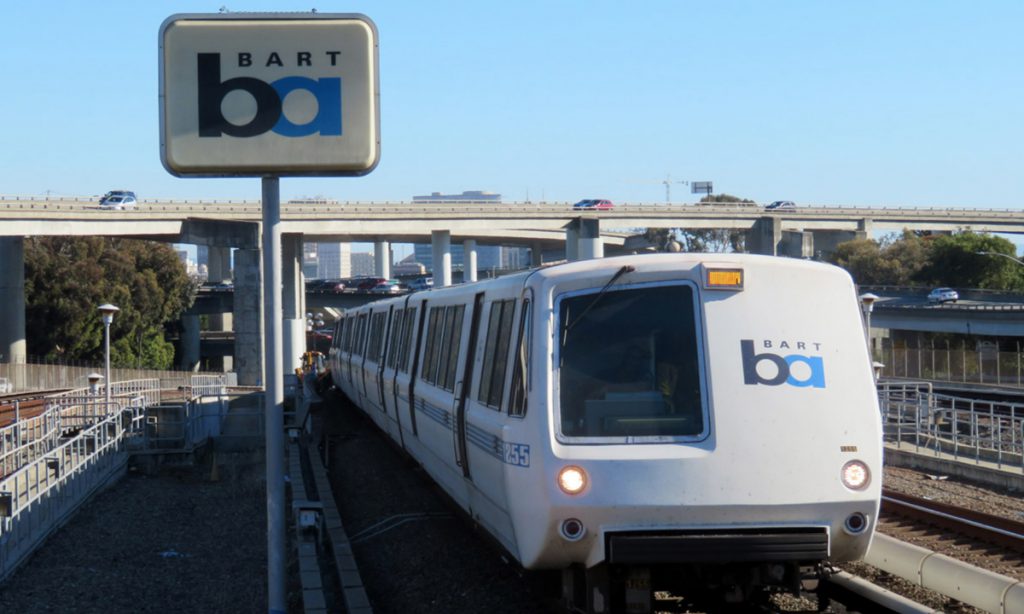
CALIFORNIA: BART (Bay Area Rapid Transit) is experiencing significant ridership declines in with immediate loss of revenues as the result of the COVID-19 pandemic and current Shelter In Place Orders throughout its service area. Ridership dropped 70% March 16; 85% March 17. “That level of decline will cost BART a revenue loss of approximately $37 million per month,” the agency said. “A sustained ridership loss of 85% and a 50% reduction in economic activity impacting other revenue sources could reduce BART’s monthly revenues by $55 million. BART sent letters to local, state and federal officials and has been making calls asking for emergency stimulus funding.
“BART staff has provided a Fact Sheet outlining the COVID-19 impacts,” the agency said. “At the federal level, BART is requesting that transit be specifically included in future stimulus bills. “The Coronavirus Preparedness and Response Supplemental Appropriations Act provides $8.3 billion to support response efforts to the virus, with $950 million set aside for state and local efforts; including infection control at the local level to prevent additional cases. Approximately $37 million will be sent to California. To date, neither the Centers for Disease Control and Prevention (CDC) nor the State of California have issued guidance on whether a local special district, such as BART, could directly apply for funding. BART will be applying for a grant from the Federal Emergency Management Agency (FEMA) under its program to support operational expenses in response to COVID-19.
“[California Governor Gavin Newsom] signed emergency legislation with $500 million for COVID-19 response funding. As a special district, BART should be directly eligible for this emergency funding under the authority of the California Disaster Assistance Act and plans to pursue funds through the Office of the Governor, California Office of Emergency Services, and the California State Transportation Agency. BART is asking how the $500 million appropriation will be allocated and is requesting a direct allocation of $55 million to offset our loss in revenue due. BART is also requesting an immediate operating subsidy from the Metropolitan Transportation Commission (MTC).”
Sonoma-Marin Area Regional Transit (SMART) trains operating north of San Francisco Bay will continue running on the regular schedule on weekdays, but weekend service has been eliminated. Sacramento Regional Transit (SRTD) has canceled bus routes serving schools, but not light rail service. Valley Transit Authority (VTA) in San José has done likewise. The agency’s website says that the “shelter in place order DOES NOT apply to essential government services, which includes public transit” (emphasis in original). The four weekday commuter trains from Stockton to San José in the morning and back in the p.m. peak operated by Altamont Commuter Express (ACE) are still running, but the Saturday schedule of two round trips has been suspended. In Los Angeles, the Metrolink website does not mention any changes in service for the agency’s regional trains. L.A. Metro also continues to operate regular bus and rail service at this time. San Diego Metropolitan Transit System (MTS) is operating normal service, too.
NCTD (North County Transit District) Coaster commuter rail service (Oceanside-Santa Fe Depot in downtown San Diego) is experiencing significant ridership declines and is implementing temporary service reductions. Beginning Monday, March 23, 10 of 22 weekday trains (5 in each direction) will be suspended. All weekend service will be suspended beginning Saturday, March 28. No service reductions have been announced thus far for Sprinter light rail (Oceanside-Escondido).
Caltrain has cancelled Baby Bullet service between San Francisco and San José during the morning and afternoon rush hour. There has been a 75% drop in one-way Caltrain ridership.
THE ALASKA RAILROAD (ARRC) has suspended regularly scheduled Aurora Winter Train passenger service between Anchorage and Fairbanks starting March 19 and continuing through April 30. ARRC will provide passenger service to the roadless area between Talkeetna and Hurricane via the Hurricane Turn Train on Thursday, April 2. This suspension affects nine Aurora Winter Train round-trips but does not affect freight service. Passenger service personnel are reaching out to notify and refund all passengers and tour operators with bookings on the suspended trains.
“We recognize that this could be a significant inconvenience for many people, particularly those who have no other way to access their homes and properties along the Railbelt, so we will still operate a limited service Hurricane Turn Train as scheduled for April 2 to make sure they are not stranded,” ARRC President and CEO Bill O’Leary said. “To support customers during this period of uncertainty, we are extending a flexible 24-hour cancellation policy through the summer 2020 season, in hopes that this policy offers some peace of mind for travelers with summer travel plans.”
FRA EMERGENCY RELIEF DOCKET: Under Federal Railroad Administration regulations, each year FRA creates an Emergency Relief Docket (ERD) in the publicly accessible Department of Transportation docket system (49 CFR 211.45). The ERD for calendar year 2020 is FRA-2020-0002.
On March 13, 2020, FRA Administrator Ron Batory determined that “the imminent threat and exposure to the Coronavirus Disease 2019 (COVID-19) poses a risk of serious illness that constitutes an ‘emergency situation’ as related to railroad operations. Therefore, the Administrator has activated the Emergency Relief Docket (FRA-2020-0002). Notice of the Administrator’s declaration and ERD activation is posted on FRA’s website and in docket no. FRA-2020-0002 on www.regulations.gov.”
“This message is to ensure everyone has a clear understanding of the emergency waiver process and to provide you with a copy of the ERD,” Batory said in a notice to employees. “When the FRA Administrator (or his/her designee) determines that an emergency event or situation exists or is imminent, 49 CFR 211.45 authorizes the Administrator to activate the docket, and railroads may then request relief from FRA regulations related to the emergency. Such requests for relief must address how the request relates to the emergency and, at a minimum, specify (1) how the petitioner or public is affected by the emergency; (2) what FRA regulations are implicated; (3) how waiver of the implicated regulations would benefit the petitioner during the emergency; and (4) how long the petitioner expects to be affected by the emergency. FRA’s Railroad Safety Board will consider any waiver requests submitted to the ERD under the expedited procedures of 49 CFR 211.45 and any relief granted will not exceed 60 days.
“FRA is standing by to review and process any waiver submissions as quickly as possible and in accordance with the requirements of 49 CFR 211.45.”
FEDERAL TRANSIT ADMINISTRATION: Expanded eligibility of federal assistance is available under FTA’s Emergency Relief Program to help transit agencies respond to COVID-19 in states where the Governor has declared an emergency. This includes allowing all transit providers, including those in large urban areas, to use federal formula funds for emergency-related capital and operating expenses, and raises the cap on the federal government’s share of those expenses, and permitting those expenses to be covered at an 80% federal share rather than 50%.
In addition to allowing the expanded use of formula funds for transit providers, FTA has established an Emergency Relief docket that allows transit providers in states where the Governor has declared an emergency related to COVID-19 to request temporary relief from Federal requirements under 49 U.S.C. Chapter 53 as well as any non-statutory FTA requirements.
“Today, I have issued a notice of concurrence with declarations of emergencies issued by Governors that relate to COVID-19. FTA grantees may now use their Urbanized Area and Rural formula funds to take measures to protect the health and safety of their riders and their workforce,” said FTA Acting Administrator K. Jane Williams. “Expansion of the permissible uses of federal funds will allow transit providers greater flexibility in the areas of the country that need it most. Invoking the eligibility of the Emergency Relief Program also provide funds at a higher federal share.”
NORFOLK SOUTHERN COVID-19 UPDATE: “Based on the social distancing guidance from the Centers for Disease Control and Prevention and as a prudent precaution, Norfolk Southern is transitioning to remote working arrangements for employees whose job functions permit. This action predominately affects those employees not directly associated with train operations and allows Norfolk Southern to better ensure a safe working environment for those activities that must remain in our offices. The same communication channels exist and all phone numbers and email contacts remain the same. Our expectation is this process will be seamless to you.
“We have restricted access to critical functions in our offices such as our Network Operations Center and implemented social distancing practices for these functions. We have executed general safety actions such as posting information about the importance of hand washing and good hygiene, limiting office visits from non-employees, increasing cleaning regimens, and ordering additional cleaning supplies.
“For our field transportation employees, Norfolk Southern is taking proactive action throughout the network. This includes adding steps in our locomotive servicing process to disinfect all common surfaces, providing sanitizing kits to each crew that will be used to wipe down surfaces at each crew change point, staggering crew briefings to eliminate large collections of crew members at any one point, and working with all of our hotel and taxi vendors to ensure each is also maintaining the highest standards of safety and hygiene for our personnel.
“We have activated Norfolk Southern’s Operations Command Center, staffed with senior management from all our Operating disciplines to closely monitor the situation and ensure we are staying ahead of any potential issues. Marketing and Customer Service are fully integrated in the Operations Command Center to ensure incorporation of changes in customer requirements and open communication with our customers.”
CN: “We are taking all necessary steps to protect our personnel while we continue to run a solid operation to keep the economy moving by serving our customers,” CN said. “Because our recovery from the illegal blockades is progressing well, we are working closely with our customers to further assist them in getting more of their goods to end markets as CN’s strong intermodal capacity can definitely increase to compensate for the diminishing availability of long-haul truck drivers. Safety is a core value at CN; we are monitoring the evolution of the situation closely and we are aligned and take direction from the World Health Organization, as well as Provincial, State and Federal authorities as required in Canada and the U.S., as well as authorities from other countries where we operate.”
RAILWAY AGE INSIGHT, CONTRIBUTING EDITOR JIM BLAZE: “Thinking like a rail economist, following are alternate views about the potential consumer- and services-led U.S. economic decline during first-half 2020. Questions: What could be the impact on a second-half 2020 recovery timeline? Where does rail freight fit in, as there aren’t very many historical experiences upon which to ponder? (How many consumer/medical fear-driven recessionary events have we lived through?)
“I base these observations in part on my thinking about a March 14 Washington Post story written by Economics Correspondent Heather Long and one of her associates. The specific rail freight references are mine.
“More than 18 million Americans work in industries that are being hurt by the initial efforts to contain the virus: travel and tourism, spectator sports, museums, hotels, passenger railways, the performing arts and food services (restaurants, bars and pubs, fast food, etc.) according to JPMorgan Chase economist Michael Feroli. Average revenue lost by such cancelled events is huge, and based upon each unit not purchased. These non-consumed items are not simply postponed. They won’t occur later. There is little ‘make-up’ here. Activity in the services sector of roughly $2 trillion of the U.S. annual economy ‘will be significantly depressed for three months—longer if the virus does not dissipate in the summer,’ wrote Feroli in a March 12 note to clients Thursday. By the end of this month, the global economy probably will have shrunk by 1.2%, ‘not far short of the 1.6% drop in world output seen at the depth of the global final crisis’ during the fourth quarter of 2008, according to Capital Economics in London. Within three weeks of the first reported coronavirus death in a Seattle suburb, restaurant reservations in the city fell nearly 60%, according to OpenTable, the online service. No one is going to double-up later on for missed meals out over the past few months. On March 13, Delta Air Lines said it is slashing flights by 40%, the largest reduction in Delta’s history, surpassing even that executed after the Sept. 11, 2001 terrorist attacks. Energy prices should be a lot cheaper. ‘We’ll see a huge surge in oil supply over the next few weeks and no demand for it. We think the price will dip into the $20 range and could even touch the teens,’ according to Francisco Blanch, head of commodities and derivatives research at Bank of America.
“For freight railroads, what does all this mean? Ironically, lower street fuel prices could actually hurt rail freight’s search for market share vs. trucking. But consider the following: Many trucking companies may be forced to cut capacity and lay off drivers, with some companies filing for bankruptcy. That disruption might help railroads gain market share. The intermodal rail freight sector might start to recover international container volume by mid-April—but will there be a shortage of truck drayage drivers? Domestic intermodal recovery might be dependent upon the support required to re-stock grocery stores and forwarding warehouses that are low on inventory. But, who has market logistics intelligence correlated to intermodal rail use? The railroads? Probably not. J.B. Hunt or Hub Group might. Nothing is crystal clear.”
AMTRAK continues to reduce service. The latest round of cuts affects mostly the corridors outside the Northeast Corridor (NEC): the Capitol Corridor in California, the Cascades, the Downeaster,Empire Service and several Chicago-based services. Service in the Midwest will return to levels operated before 2006, when the State of Illinois added service between Chicago and the outlying terminals of St. Louis, Carbondale and Quincy.
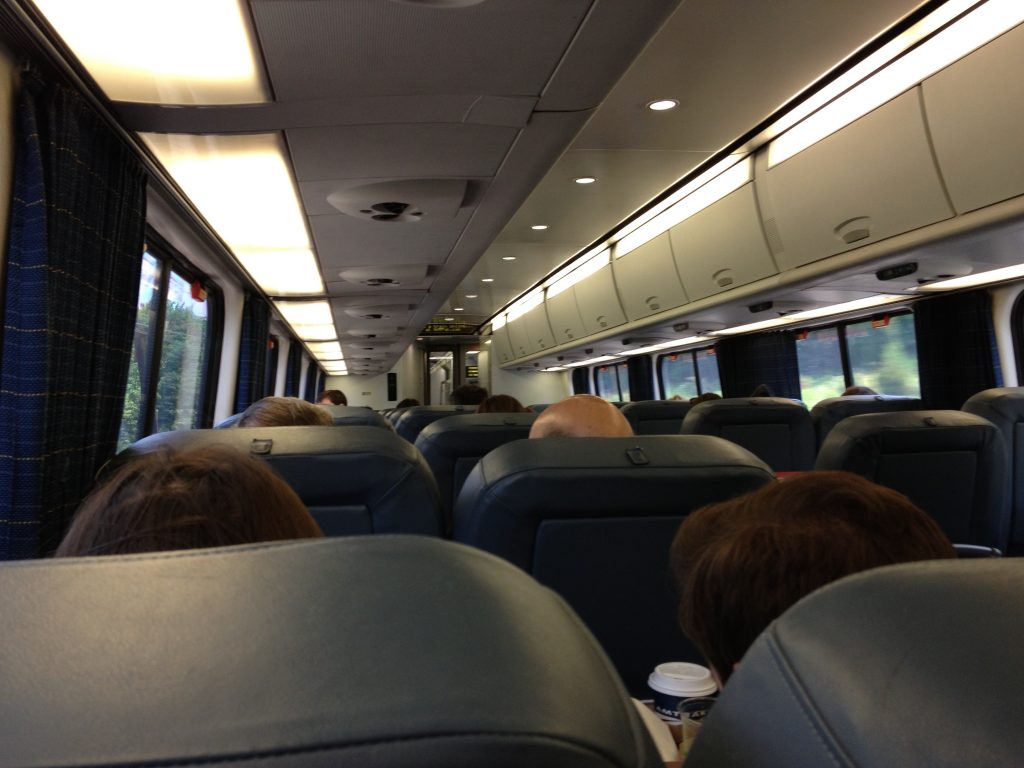
Amtrak cleaning trains more frequently and waiving reservation change fees amid coronavirus fears.
At this writing (March 20), it is impossible to view schedules directly on the Amtrak website, www.amtrak.com. Any attempt to view schedules results in the latest notice about service reductions in light of the COVID-19 virus. Since is not possible to view full-line schedules, the only way to find departure times is through the “booking” function on the site, by inquiring about a “booking” for each of a number of O/D pairs. It was very tedious to get schedules that way, but our search yielded the following information, which Contributing Editor David Peter Alan does not believe is available by any other means.
To check on the long-distance Amtrak network, we plugged the endpoints for all long-distance trains into the “booking” function to the web site as O/D pairs for Wednesday, April 8, as a representative date. All trains are still in the schedule, although that could change. Some trains still had “saver fares” available, but some did not. It appears that there are some travelers who have booked their trips already, and still plan to ride.
So, far we have found one long-distance train that has been canceled, essentially entirely: the Palmetto, at least between Washington, D.C and Savannah. An earlier advisory stated that it would be suspended starting this Monday, March 23, though April 9. Will it come back then, or at a later date, or never? We could ask the same question about every other train listed in this report, and there are many of them, on most of Amtrak’s corridors.
Service between Seattle and Vancouver, B.C. on the Cascades line has already been eliminated, due to Canada closing the border. Now the rest of the corridor, between Seattle, Portland and Eugene will lose one of its trains. The last departures of the day, Train 508, which leaves Eugene at 4:00 p.m., and Train 509, which leaves Seattle at 6:05 p.m., have been suspended. There are still three other trains in addition to the Coast Starlight, but there are no longer any departures after 3:00 p.m.
Service on the Capitol Corridor between Sacramento and the Bay Area has been slashed. Beginning March 21, there will only be six daily trains from Emeryville to Sacramento, plus the Coast Starlight. From Sacramento, there will be only five trains, plus the Coast Starlight, with the last departure at 5:52 p.m. The previous schedule included 15 trains in each direction on weekdays and eleven on weekends. The hours of operation at some stations will change, too.
The Midwest corridors will incur significant service cuts. The worst will befall Wolverine service between Chicago and Detroit, where the only remaining train will be Train 352, which leaves Chicago at 1:25 p.m. The early-morning and early-evening departures are gone. From Detroit to Chicago, the only remaining train is 351, which leaves Detroit at 6:28 a.m. For adventurous travelers, the website offers the option of taking the Capitol Limited between Chicago and Toledo, complete with a seven-hour overnight layover in Toledo (there are cushions on the benches, so it could be worse), and a bus ride between there and Detroit. This marks the first time in modern history that there is only one daily train in each direction between Chicago and Detroit. Even during the bleak days of the early 1970s, there were two.
Lincoln Service between Chicago and St. Louis will be cut in half. The 4:35 a.m. and 5:30 p.m. departures from St. Louis will continue to run, along with the Texas Eagle. The 6:30 a.m. and 3:00 p.m. departures will not. The 9:25 a.m. and 7:00 p.m. departures from Chicago, along with the Texas Eagle, will continue to operate. The 7:00 a.m. train and 5:15 p.m. train will not.
There will be only one round trip between Chicago and Carbondale, in addition to the City of New Orleans. The 7:30 a.m. departure from Carbondale will survive, as will the 4:00 p.m. return from Chicago. The morning departure from Chicago and the afternoon return from Carbondale are gone. Similarly, the early-morning departure from Quincy and late-afternoon return from Chicago will continue, while the morning train from Chicago and evening return from Quincy will not.
Hiawatha service between Chicago and Milwaukee will reach its lowest point in modern history, as well. In addition to the Empire Builder, the only remaining Hiawatha train will leave Milwaukee at 6:15 a.m. (8:05 a.m. on weekends) and return at 5:08 p.m., a commuter schedule. The previous schedule included seven trains Mondays through Saturdays, and six on Sundays in each direction.
Amtrak has implemented revised Northeast Corridor schedules effective Monday, March 16 through Sunday, March 29, by running the typical Saturday schedule on a daily basis. Frequent service is still available on Acela Express and Northeast Regional trains connecting Boston, New York, Washington D.C. and Virginia.
Downeaster service between Boston and Brunswick, Maine through Portland has been slashed, as well. The previous schedule called for five daily trains in each direction, but only two will continue to run. They will leave North Station in Boston at 9:05 a.m. and 5:00 p.m. and Brunswick early in the morning, at 4:30 a.m. and 7:30 a.m. On weekends, trains will leave Boston at 1:00 p.m. and 4:50 p.m. and Brunswick at 7:30 a.m. and 12:20 p.m. These schedules render a one-day round trip from Boston or points south to New Hampshire or Maine impossible on any day.
New York State’s Empire Service is losing one train west of Buffalo, the Maple Leaf (which will not live up to its name, since it will end at Niagara Falls, N.Y. and not enter Canada) and Lake Shore Limitedwill continue to run, but the only other trains west of Albany will be 284, which will leave Niagara Falls at 6:47 a.m., and 283, which will leave New York City at 1:20 p.m. The new schedule also calls for only eight trains each way between New York and Albany-Rensselaer, including the Lake Shore, Ethan Allen Express and truncated Maple Leaf. The previous schedule called for 13 trains on weekdays and 10 on weekends.
The Valley Flyer, an experiment that extended two daily trains north of Springfield to Greenfield, Mass., may be in doubt. Starting Monday, there will only be one such train, leaving Greenfield at 9:15 a.m. and New York at 3:00 p.m., in addition to the Vermonter schedule.
Amtrak’s announcement also said that there are changes coming to Amtrak Thruway bus schedules, but it is not possible to determine what they might be, short of attempting to book an O/D pair that includes a bus connection. If you are planning such a trip, we suggest that you check the Amtrak website as soon as possible.
For those trains that are still operating, Amtrak has stepped up cleaning. New protocols include more frequent (in some cases hourly) cleaning of trains and stations. Amtrak crews are wiping handrails, doorknobs, handles and surfaces, and the railroad is making hand sanitizer and disinfectant wipes available to passengers and workers aboard trains and in stations.
VIA RAIL CANADA: In light of the recent measures being taken to help prevent the spread of COVID-19, VIA Rail’s overnight trains (Toronto-Vancouver Canadian and Montreal-Halifax Ocean) were cancelled beginning March 13, 2020. These trains will not be operating from March 13 to March 27 inclusively, with the possibility of extension. Corridor operations, centered around Montreal, Ottawa and Toronto, have been cut by about 50%. VIA Rail is not permitting Amtrak’s Maple Leaf and Adirondack or Cascades trains to cross the border.
MBTA (Boston): The MBTA and Keolis Commuter Services, the agency’s commuter rail contract operator, instituted a Reduced Service Schedule effective March 17. This service level “provides a public transit option for people with essential travel needs, such as medical professionals and emergency responders, while helping to limit the spread of COVID-19 by encouraging people to practice social distancing and work-from-home when possible,” Keolis said. The schedule applies to all lines and the modifications, while limited, support periods of peak travel while providing off-peak options throughout the day. As a further precaution to limit the spread of coronavirus, MBTA and Keolis are encouraging passengers to purchase tickets at ticket offices, and vending machines, or on the M-Ticket app to limit the use of cash whenever possible.”
“We will continue to disinfect key passenger areas and touchpoints on Commuter Rail trains every 24 hours, with many of our trains receiving this deeper clean every 12 hours,” said Keolis CEO and General Manager David Scorey. “We’re working closely with the MBTA and monitoring closely guidance from state and federal public health officials to ensure we’re staying up-to-date during this very fluid situation. While we are continuing to provide service at a reduced level, it is critical for people to follow recent state protocols, such as social distancing and very limited gatherings.”
WMATA: The Washington, D.C., Metrorail system implemented service cuts after it carried 100,000 fewer riders on March 11, compared to March 4. Service on all lines now operates only every 15 minutes, and the system now close at 11:00 pm. Officials have asked riders not to use the system to access the Tidal Basin, to view the cherry blossoms, which are now in bloom, saying that the limited capacity is needed to support only essential trips.
CANADA RAIL TRANSIT: STM in Montreal reports that its Metro is running normally. Exo (formerly AMT), which runs commuter trains serving Montreal, has not reported any service reductions. In Ontario, the Toronto Transit Commission (TTC) continues to offer regular service. GO Transit, which operates the region’s commuter trains, has reduced service, effective Wednesday, March 18. The once-a-day round trip to Niagara Falls is gone. There are no express trips at peak commuting hours, and some stops have been eliminated. UP Express trains between Toronto Union Station and Pearson International Airport will run only every 30 minutes at peak hours, although there was no mention of service being reduced at other times. OC Transpo has not announced any service reduction on light rail in Ottawa. ION light rail on Grand River Transit in Kitchner and Waterloo is operating every 15 minutes. Until now, daytime service ran every 10 minutes. None of the websites for the transit providers in Calgary, Edmonton or Vancouver are reporting rail service reductions.
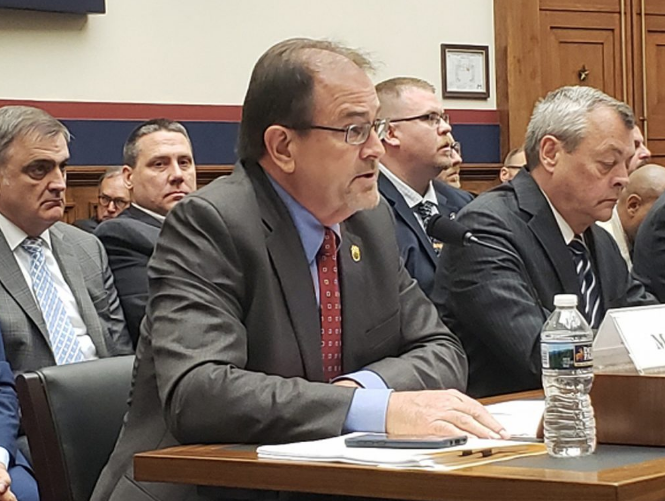
RAIL LABOR: The two unions representing T&ES (Train & Engine Service) employees—the Brotherhood of Locomotive Engineers and Trainmen (BLET) and the SMART-Transportation Division—sent a letter, signed by BLET President Dennis Pierce and SMART-TD President Jeremy R. Ferguson, to the Federal Railroad Administration (FRA) “urging [issuance of] guidelines directed toward U.S. rail carriers, employees and passengers, pertaining to, at minimum:
- “Sanitizing equipment such as (but not limited to) locomotive cabs, computers, remote control boxes, and communal areas such as passenger cars, offices, crew staging areas, company provided ground transportation, and away-from-home lodging facilities.
- “Providing crews and passengers with personal protective equipment, alcohol-based hand sanitizer strong enough to kill viruses, and other cleaning supplies as deemed appropriate.
- “Encouraging employees to stay home if they have respiratory symptoms, (coughing, sneezing, shortness of breath, and/or fever) and to leave work if they develop such symptoms while at the workplace. In doing so, we ask that FRA strongly encourage carriers to relax current attendance policies which can be described as unforgiving, at best, to employees who miss work due to illness.
- “Educating all rail employees (including supervisory staff) on the appropriate guidelines for self-monitoring of their health condition, as well as monitoring and addressing others who appear to be symptomatic.
- “Reporting to the appropriate health departments where employees have shown aforementioned symptoms that prevent them from carrying out their assigned duties.
- “Developing plans for employees who reside with, and/or come into direct contact with individuals who are symptomatic.
- “Encouraging carriers to develop health programs and practices that exceed FRA’s recommended guidelines.
- “Encouraging all parties to understand and comply with other such guidelines issued by the CDC (Center for Disease Control and Prevention).
Additionally, Pierce sent a similar letter to the National Railway Labor Conference, the American Short Line and Regional Railroad Association (ASLRRA) and the American Public Transportation Association (APTA). Regarding sanitation, BLET wants railroads to supply hand sanitizer and wipes that contain 60-90% isopropyl alcohol. Wipes also should carry chlorhexidine gluconate (4%) and benzethonium chloride (0.5%).
FRA responded to the BLET/SMART-TD letter by saying that it “has taken a whole-of-government approach that has paved the way for a whole-of-America response, with the CDC being the appropriate governmental source for guidance on COVID-19.”
Commenting on the BLET/SMART-TD letter, Railway Age Capitol Hill Contributing Editor Frank N. Wilner noted that the FRA “has no authority in this area,” and that because the letter was not sent to the railroads, it “perhaps was intended to avoid a quid pro quo response from the carriers—the trade being authority to institute one-person crew operations that the two unions are refusing to consider at the bargaining table.”

APTA: The organization has cancelled its Legislative Conference, scheduled to take place in Washington, D.C. from March 15-17. APTA said it “continues to monitor federal legislative action and its impact on public transportation on behalf of the industry. The association is considering alternatives and potential avenues through which to reschedule, relocate or redesign this conference for later in 2020. APTA’s top priority is the health and safety of our members and the health and safety of the communities they serve. This decision allows public transportation leaders to stay in their communities where they can focus on the health and safety of their riders and employees while continuing to provide safe and efficient transportation for the millions of Americans who rely on public transit.”
OVERSEAS DEVELOPMENTS
Numerous railway industry events overseas have been postponed or cancelled as organizers respond to the restrictions being placed on large gatherings of people to prevent the spread of the coronavirus. As well, the UIC (International Union of Railways) has formed a task force to assist operators in dealing with the rapidly escalating situation, and several overseas train operators have instituted aggressive measures, including more stringent train cleaning, steps to protect staff, ticket refunds without penalty and cancellation of services. However, numerous cross-border services have been shut down.
- Hong Kong’s Mass Transit Railway (MTR) is deploying 20 Vaporized Hydrogen Peroxide (VHP) robots to deep-clean trains at depots as well as stations to improve protection against the spread of coronavirus. The VHP Robot was developed jointly by MTR and Avalon Biomedical, a Hong Kong biotechnology company. The robots are designed to automatically spray hydrogen peroxide solution, which is atomized to a specific concentration to ensure that disinfectants penetrate small gaps which are difficult to reach during normal cleaning. The objective is to eliminate viruses and bacteria such as staphylococcus aureus and Escherichia coli. MTR says the VHP Robot has passed tests and achieved the desired results. VHP Robots operate automatically by pre-setting the floor plan of the designated area. It is also possible to remotely control the robot manually within a distance of 20 meters using a mobile device. MTR says it normally takes about four hours to clean an eight-car train in automatic mode. MTR staff can also deploy the VHP Robot to deep clean a special situation, such as a passenger vomiting on a train, using diluted bleach. The robot recently disinfected staff facilities and passenger lifts at Mong Kok East station after a member of staff was diagnosed with Covid-19.
- Intermodal freight operators in Europe have called for a number of measures to be put in place to allow freight to continue to move, especially during the lock-down in Italy. An open letter addressed to Italian and European institutions outlines why intermodal freight via rail is well-placed to move goods while limiting the risk of spreading Covid-19. The letter was signed by the National Association of Automotive Transport Companies (ANITA); Railway and Intermodal Operators Association (ASSOFERR); Assologistica; Fercargo; Fercargo Manovra; Fercargo Rotabili; Fercargo Terminal; SOS Logistics – Association for Sustainable Logistics; Association of Freight Villages (UIR); European Shippers’ Council (ESC); European Rail Freight Association (ERFA), Brussels; European Railways Network (NEE); and the International Union for Road-Rail Combined Transport (UIRR).
- Trenitalia and NTV-Italo have cut the frequency of their high-speed services. Both operators have closed their passenger lounges at stations, suspended at-seat service and are trying to maintain a three-meter distance between passengers inside trains. Trenitalia has installed hand sanitizers on trains, and both operators have stepped up train cleaning. NTV-Italo has issued train staff with specific instructions as well as protective equipment such as masks, disposable gloves and hand sanitizer.
- Thello has suspended both its overnight sleeper service between Venice, Milan and Paris, and its day trains linking Milan, Nice and Marseille until April 3. However, French National Railways (SNCF) appears to be still running its Paris – Turin – Milan TGV services.
- The EuroCity service linking Munich, Innsbruck and cities in northern Italy, operated jointly by German Rail (DB) and Austrian Federal Railways (ÖBB), has been suspended south of Innsbruck.
- DB (German Rail) says it has increased the use of soap and disinfectants on trains by up to 20% and is gradually reducing the already tight intervals for cleaning long-distance trains from four to two hours. But Germany’s decision to close its border with Austria, Switzerland, France and Denmark due to the coronavirus pandemic means that international passenger services to most of these countries have been cancelled. This follows the decision last week by Poland and the Czech Republicto close their borders with neighboring countries. DB is working with the Federal Ministry of the Interior to reduce the frequency of high-speed services between Germany and France. These changes will come into effect on March 17. DB is also continuing to operate a full domestic long-distance timetable and will continue to run regional services unless individual German states or contractors decide otherwise. However, local cross-border services to Poland have been cancelled.
- Austrian Federal Railways (ÖBB) Nightjet services on the Munich – Salzburg – Villach – Italy route are only running as far as Villach in Austria, while Nightjet trains on the routes from Berlin and Hamburg to Vienna and Zürich have been cancelled. ÖBB has also cancelled all passenger services crossing the border to Switzerland.
- Russia Railways (RZD) has cancelled all international passenger services to Latvia, Lithuania, Ukraine and Moldova.
- Israel Railways has withdrawn passenger services on the following routes: Rishon Le-Zion Harishonim – Lod, Beit-Shemesh – Jerusalem Malkha, and Dimona – Beer-Sheva North/University. This was after 34 train crew were put into isolation after helping passengers who were infected by the coronavirus.
- Danish State Railways (DSB) introduced a range of measures on March 11. These include running longer trains during off-peak periods to allow passengers to sit further apart from one another, making all tickets refundable at no charge, no longer accepting cash payments onboard trains, deploying more staff at critical locations, and improving communication with passengers.
- The Czech Republic government has prohibited all cross-border passenger train, bus and boat services. The restrictions, which will remain in place for 30 days, will also affect international air passenger transport. Only road vehicles with nine or fewer people on board will be allowed to cross the border unless they are conveying Czech citizens returning to the country or foreigners leaving the Czech Republic. However, empty passenger trains will be allowed to cross the border.
- Swiss Federal Railways (SBB) has made changes to services to and from Italy that will remain in effect until April 5. On the Gotthard route, six Zürich to EuroCity trains will only operate between Chiasso and Zürich, within Switzerland. On the Simplon route, Geneva to Milan and Basle to Milan trains from Milan will only run within Switzerland.
- Croatia is stopping people from infected areas entering the country and Slovenia has suspended cross-border services to Italy.
- In Spain, Renfe is continuing to operate its normal suburban timetable in major cities. However, it is only operating 50% of its long-distance and high-speed services and is restricting the capacity of each coach to 30% to ensure a safe distance between passengers. All on-board catering has been withdrawn. Renfe has also decided to postpone the introduction of its new Avlo low-fare high-speed service, which was scheduled for April 6.
- The International Railway Congress in Vienna, organized by Austrian Federal Railways (ÖBB) and Russian Railways (RZD), originally scheduled for March 26–27, has been postponed until Autumn 2020. The organizers say registration to the event will remain open and all fees for the event will remain in place for the new congress date.
- The 7th Biennial International Railway Forum & Conference (IRFC) in Prague has been postponed from March 26–27 to November 30-December 2.
- The Rail Industry Meetings event in Valenciennes, France, has also been rescheduled from March 25-26 to June 3-4.
- The International Association of Public Transport (UITP) has published a detailed set of guidelines for public transport operators in its Management of Covid-19 factsheet, which is available to view on the UITP website.
- The UITP/Mena transport congress and exhibition, due to take place in Dubai from April 13-15, has been rescheduled to October 5-7.
- The EU Agency for Railway’s Rail Safety Days event, planned for May 26-28 in Valenciennes, has been cancelled, although the Agency intends to hold the event at a later date.
- Terrapinn and Spain’s railway industry association Mafex have postponed the Rail Live conference and exhibition in Madrid on March 31-April 2. Postponement of Rail Live followed postponement of IT Trans in Germany on March 3-5, the Rail Forum Europe conference on the EU’s Green Deal on March 18, and the International Union of Railways’ (UIC) World Congress on High-Speed Rail in Beijing, which was due to take place June 30 to July 3.
- InnoTrans 2020 (Sept. 22-25, Berlin) organizers have not announced postponement plans, instead choosing to ramp-up marketing efforts related to exhibitors from the cleaning industry: “Cleanliness and hygiene on buses, at stations, bus stops and on trains are becoming an increasingly important aspect for users of public transport and rail networks. This is also reflected in the growing size of the cleaning industry segment at InnoTrans 2020. In Hall 6.2 a variety of leading international companies will be exhibiting their innovative products for optimum cleanliness at InnoTrans. The focus this year is on efficient cleaning systems and those manufactured to customers’ specifications. The displays also include toilet waste disposal systems, washing units as well as cleaning agents, care products and disinfectants.”
RAILWAY AGE EDITOR-IN-CHIEF COMMENTARY: As the COVID-19 pandemic continues its onslaught, it has been discussed on various credible, reliable news media outlets (CNN, CBS, NBC, ABC, etc.) whether climate change—global warming, which is real—had a role in the outbreak. Given the effects of climate change—an increase in severe weather globally, flooding, population shifts, natural habitats destroyed and the effect on wildlife—it is likely a contributing factor. Disease does not exist in a vacuum.
We in this industry know that railways, freight and passenger, are the most environmentally friendly and safest transportation mode—bar none. There are numerous examples of what the industry is doing to be “greener” and, in effect, address climate change. Here’s one whose timing and intent is particularly encouraging:
Union Pacific on March 10 declared its intention “to set science-based targets to determine how much and how quickly the company will reduce greenhouse gas (GHG) emissions to support global climate change goals. A commitment letter was submitted to the Science Based Targets Initiative (SBTi), which independently assesses corporate emissions reduction targets in line with what climate scientists say is needed to meet the Paris Agreement goals—limiting global warming to well below 2°C above pre-industrial levels. The company’s target will use the SBTi’s Sectoral Decarbonization Approach Transport tool, which models targets for direct and indirect transportation emissions. Union Pacific anticipates finalizing its target and submitting it for approval to the SBTi within a year.”
It is encouraging that Union Pacific is in step with the Paris Agreement, an initiative the Trump Administration rejected and withdrew from soon after Trump took office in January 2016. – William C. Vantuono.
HUMOROUS BUT DISTURBING NONETHELESS: “Nobody ever lost a dime underestimating the intelligence of the American public,” comments one industry observer, who shared this obviously doctored photo with Railway Age:
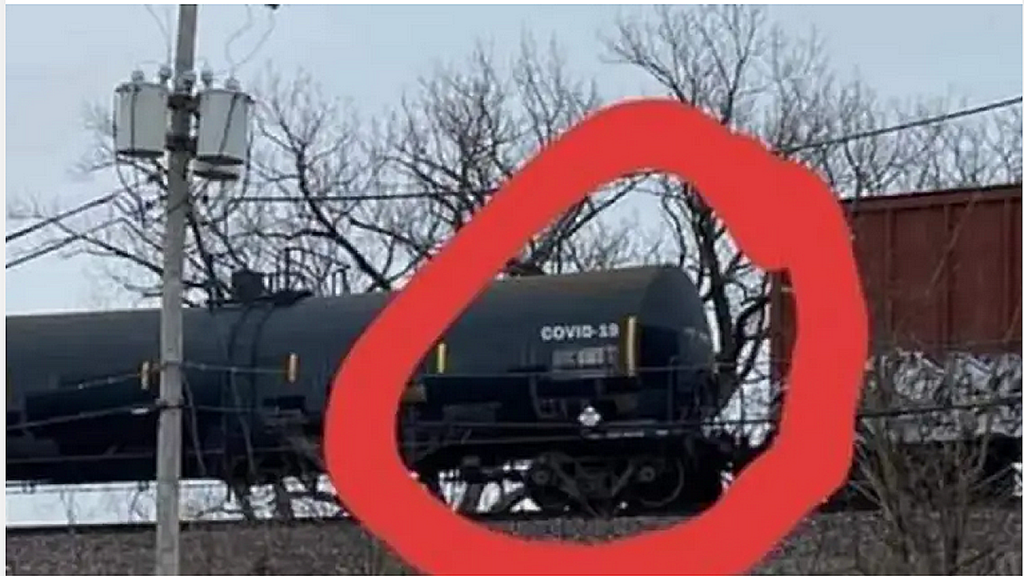
Reporting and analysis by David Briginshaw (IRJ), David Burroughs (IRJ), Andrew Corselli (Railway Age), Kevin Smith (IRJ), David Lester (RT&S), William C. Vantuono (Railway Age) and Bill Wilson (RT&S); plus Railway Age Contributing Editors Frank N. Wilner, Jim Blaze, Bruce Kelly and David Peter Alan.





